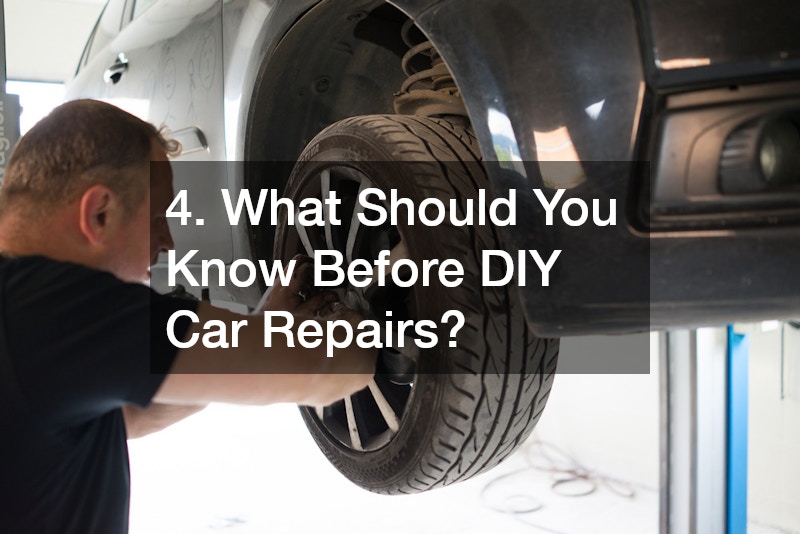For most people, owning a car is both a convenience and a necessity. But maintaining that vehicle can quickly become one of the most expensive parts of daily life. Between routine servicing, unexpected breakdowns, and cosmetic touch-ups, car repairs can add up fast. Fortunately, there are practical and effective ways to reduce those costs while keeping your vehicle running safely and efficiently.
Understanding how to maintain your car properly and knowing when to seek professional help can prevent small issues from becoming costly problems. Preventive maintenance, careful driving habits, and working with reputable auto professionals can make all the difference in long-term expenses.
This guide will explore smart, actionable strategies every driver can use to save money on car repairs. From regular maintenance and DIY tips to choosing the right mechanic and understanding insurance coverage, each section offers insights designed to help you make informed, budget-friendly decisions. You’ll also learn how factors like seasonal maintenance, driving habits, and part replacements influence long-term repair costs.
Whether you drive a brand-new vehicle or an older model, these expert-backed tips will help you get the most out of your investment—without breaking the bank.
1. How Can Regular Maintenance Save You Money?

One of the simplest ways to save money on car repairs is by prioritizing regular maintenance. Routine checks prevent small issues from escalating into major repairs. Think of maintenance as an investment rather than an expense—it keeps your vehicle safe, efficient, and reliable.
Regular oil changes, fluid top-offs, tire rotations, and brake inspections are essential for preserving your car’s performance. Neglecting these basics often leads to avoidable damage, such as engine wear or transmission failure, which can cost thousands to fix.
An auto detailer can also play a surprising role in preventive maintenance. Professional detailing protects your vehicle’s paint, upholstery, and surfaces from corrosion, UV rays, and debris buildup. Clean vehicles not only look better but also age better—saving you money on paintwork and interior repairs in the long run.
Additionally, checking tire pressure and alignment helps improve gas mileage, reducing fuel expenses. Following the manufacturer’s recommended maintenance schedule ensures your car runs efficiently and avoids major mechanical failures later on.
2. What Are the Most Common Car Repairs and How to Avoid Them?
Certain car repairs tend to appear more frequently than others—and most of them are preventable with proper care. Common repairs include brake replacements, battery failures, alternator issues, and suspension wear.
An auto body shop often sees damage caused by fender benders, rust, and neglected exterior issues that could have been avoided with timely attention. Parking in a garage or using a car cover helps protect your vehicle from weather damage. Rust spreads quickly once it begins, so fixing small chips or scratches immediately can save thousands in bodywork later.
You can also avoid expensive repairs by keeping fluids topped up. Engine oil, transmission fluid, and coolant are critical for preventing overheating and mechanical damage. Failing to maintain proper fluid levels can cause extensive internal wear.
Finally, listen to your car. Odd noises, vibrations, or warning lights are early indicators that something needs attention. Addressing small issues immediately prevents major mechanical failures, keeping your repair costs manageable over time.
3. How to Choose a Reliable Mechanic?
Finding a trustworthy mechanic is key to saving money long-term. A reliable professional won’t just fix your car—they’ll help you avoid unnecessary repairs and guide you toward smarter maintenance decisions.
Start by asking for recommendations from friends, family, or coworkers. Online reviews can also provide valuable insights. Look for a mechanic with a proven track record, transparent pricing, and good communication.
When getting estimates, don’t automatically choose the cheapest option. Instead, compare the services offered, warranties, and experience levels. A reputable shop will clearly explain what’s wrong, provide written estimates, and obtain your approval before performing extra work.
Specialized shops, such as those that offer paintless dent repairs, can also save money compared to full-body work. Paintless dent repair (PDR) is a cost-effective way to remove minor dings and hail damage without the need for repainting—restoring your car’s look at a fraction of the cost.
In short, choose mechanics who value honesty, efficiency, and customer satisfaction. It’s one of the best long-term investments you can make in your vehicle.
4. What Should You Know Before DIY Car Repairs?

Doing your own car repairs can be a great way to save money—but it’s not without risks. Before you grab your toolbox, make sure you understand what’s involved in the repair and have the proper tools and safety equipment.
Start small. Tasks like changing air filters, wiper blades, or headlights are simple and beginner-friendly. These projects save you both time and labor costs. Online tutorials and vehicle manuals provide helpful guidance, but always verify information for your specific make and model.
When it comes to larger jobs, such as brake replacements or suspension work, weigh the risks carefully. One mistake could lead to costly damage or even compromise safety. For complex issues, consulting professionals is a safer choice.
Investing in quality car accessories, such as diagnostic scanners, can also help you detect problems early. OBD-II scanners, for example, identify engine codes so you can decide whether a repair requires professional attention or a simple DIY fix.
DIY can be rewarding and cost-saving, but knowing your limits ensures safety and prevents expensive errors.
5. How Does Seasonal Maintenance Impact Repair Costs?
Seasonal changes can take a toll on your vehicle, and performing maintenance specific to each season helps prevent costly damage.
In winter, cold temperatures affect your battery, tires, and fluids. Ensuring your antifreeze levels are correct and your battery is fully charged prevents mid-season breakdowns. Summer, on the other hand, can strain your air conditioning, tires, and cooling system. Regular checks on belts, hoses, and AC refrigerant levels keep your vehicle running smoothly.
Seasonal services also include inspecting your windshield wipers, brakes, and tire tread. These small checks add up to big savings by avoiding accidents or premature wear.
In cases of weather-related damage or accidents, knowing your rights under car accident law can protect you financially. If someone else’s negligence causes damage to your vehicle, legal professionals can help you recover repair costs through insurance claims or settlements.
Ultimately, proactive seasonal maintenance prevents weather-related wear and tear—saving you money year-round.
6. Can Insurance Help Save on Repair Costs?
Many drivers underestimate how much their insurance policy can help them save on car repairs. While most insurance covers collision and comprehensive claims, some policies include additional benefits that can significantly cut costs.
For example, certain insurance plans cover car wraps or paint damage caused by accidents, hail, or vandalism. Comprehensive coverage often includes glass repairs, which can save hundreds on windshield replacements.
Before filing a claim, review your deductible and assess whether the repair cost exceeds it. For minor cosmetic work, paying out of pocket may be cheaper. However, for significant damage, filing an insurance claim ensures you’re not paying more than necessary.
Additionally, ask your insurer about discounts for safe driving, bundled policies, or regular maintenance verification. Keeping your vehicle in top shape reduces risk and may qualify you for lower premiums—providing long-term savings on both insurance and repairs.
7. What Are Signs You Need an Immediate Repair?

Ignoring warning signs can turn an affordable fix into an expensive overhaul. Recognizing the symptoms of urgent problems helps you act quickly and save money.
Common warning signs include:
- Persistent dashboard lights (check engine, oil pressure, or temperature)
- Grinding or squealing noises from brakes
- Vibrations or pulling while driving
- Overheating or smoke from the hood
- Leaking fluids under the car
Addressing these issues promptly prevents further damage. For example, ignoring brake noises can lead to rotor damage, multiplying repair costs. Similarly, delaying a coolant leak fix may result in a blown head gasket or engine failure.
When in doubt, consult a professional specializing in vehicle wraps or exterior repairs to ensure that any visible damage doesn’t hide deeper structural issues. A small dent or crack could indicate more significant problems beneath the surface.
Acting fast on warning signs keeps your repair bills low and your car safe on the road.
8. How Can You Save on Replacement Parts?
Replacement parts can make up a large portion of repair costs, but there are smart ways to cut expenses without compromising quality.
First, compare prices across suppliers. OEM (Original Equipment Manufacturer) parts are high-quality but often expensive. Aftermarket parts, produced by third-party manufacturers, are typically more affordable and can perform just as well for many applications. Just be sure to purchase from reputable sellers to avoid counterfeit or low-quality parts.
Some mechanics allow customers to bring their own parts, which can save even more. Online marketplaces and local auto parts stores often have discounts, coupons, or bulk deals for common items like filters and brake pads.
For items such as glass or mirrors, local car window replacement specialists may offer better rates than large dealerships. They often provide quick turnaround times and warranties on installation—saving both time and money.
Finally, consider refurbished or recycled parts for older vehicles. Many salvage yards sell gently used components that meet safety standards at a fraction of the cost.
9. What Are Cost-Effective Ways to Extend Your Car’s Lifespan?
The longer your car lasts, the less you’ll spend on repairs and replacements. Extending your vehicle’s lifespan requires consistent care, timely maintenance, and mindful driving habits. Every step you take to preserve your car’s condition not only saves money but also enhances reliability, safety, and overall performance.
Regular oil changes, timely tune-ups, and clean air and fuel filters keep your engine running efficiently and reduce the risk of major mechanical failures. Neglecting these basics can lead to costly repairs such as engine rebuilds or transmission replacements. Similarly, paying attention to fluid levels—including coolant, brake fluid, and power steering fluid—prevents overheating and premature component wear.
Routine washing and waxing protect your car’s paint and undercarriage from rust, corrosion, and environmental damage, particularly in areas with harsh winters, road salt, or heavy rainfall. Car hail damage repair services offer a cost-effective solution for dents without requiring full repainting, preserving your vehicle’s exterior and resale value. Addressing scratches, chips, or minor cosmetic issues promptly prevents them from worsening, which could otherwise lead to expensive bodywork.
Parking in shaded or covered areas shields your car from UV damage, which can fade paint, crack dashboards, and deteriorate upholstery. Maintaining proper tire pressure and following rotation schedules ensures even wear, extends tire life, and improves fuel efficiency. Additionally, regularly inspecting brakes, suspension, and belts allows you to catch small issues before they become costly repairs.
10. How Do Driving Habits Affect Repair Costs?

Your driving style has a major influence on how much you spend on repairs. Aggressive acceleration, hard braking, and rapid cornering put stress on your engine, transmission, and suspension systems. Over time, this wear leads to premature failure of expensive components.
Smooth, consistent driving not only saves fuel but also extends the life of your brakes and tires. Avoid carrying unnecessary weight in your car, as excess load increases strain on the drivetrain and suspension.
Pay attention to how you start and stop your vehicle. Allowing the engine to warm up before driving in cold weather helps prevent oil thickening and mechanical wear.
For commercial drivers or those with larger vehicles, partnering with a truck repair service can provide routine checkups and preventive maintenance to reduce breakdown risks. These services specialize in spotting wear early—saving drivers from costly roadside emergencies.
Mindful driving doesn’t just improve safety; it keeps repair costs lower by reducing mechanical stress across every system of your vehicle.
Saving money on car repairs starts with awareness, consistency, and smart decision-making. From scheduling regular maintenance and choosing reliable mechanics to driving more carefully and comparing part prices, every small effort contributes to long-term savings.
Preventive care reduces the risk of major repairs, while professional services—from auto detailers to truck repair specialists—help ensure quality results and vehicle longevity. Knowing when to handle a repair yourself and when to seek expert help is key to maintaining both safety and savings.
By incorporating these tips into your car care routine, you’ll extend your vehicle’s lifespan, prevent costly surprises, and enjoy smoother, more reliable driving for years to come.



